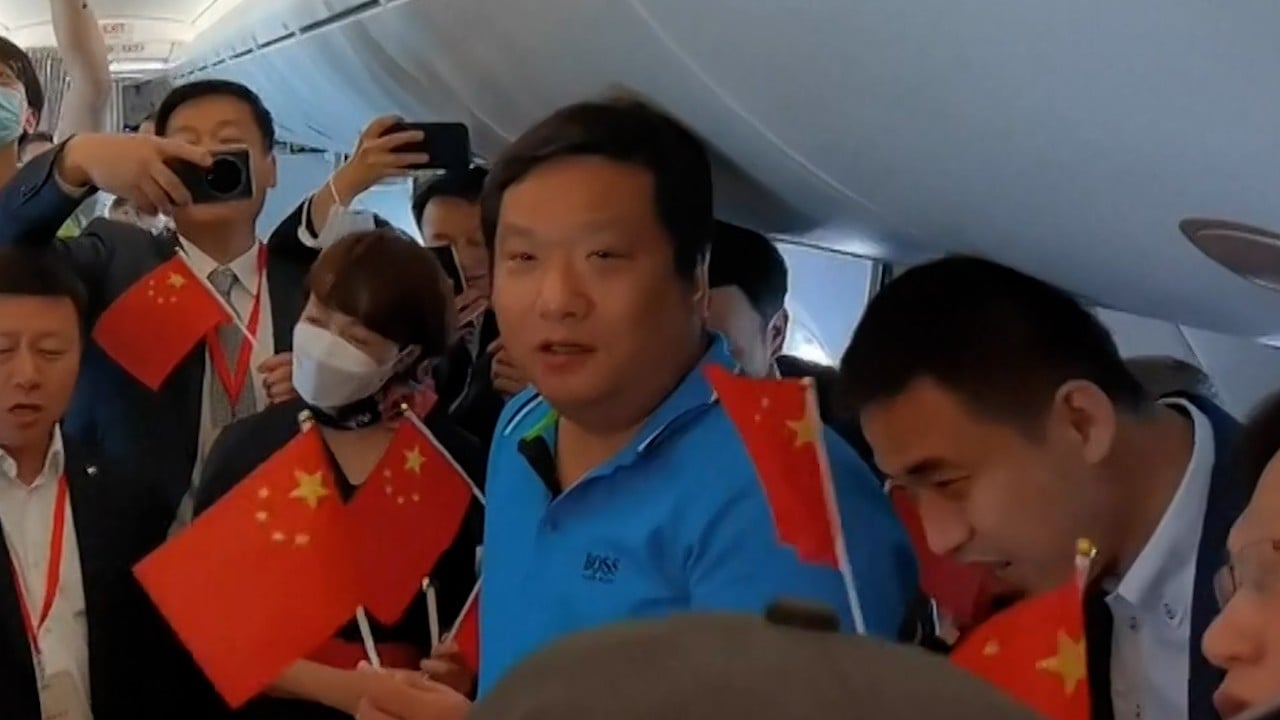
03:01
China’s C919 passenger jet completes maiden commercial flight from Shanghai to Beijing
China’s C919 debut could inspire aviation supply chain to take off, but self-sufficiency ‘difficult’
- China’s home-grown C919 passenger jet completed its first commercial flight from Shanghai to Beijing on Sunday after more than 14 years of development
- But key technologies, including the engine, avionics, control systems, communications and landing gear, were all imported despite the involvement of 200 Chinese firms
The successful commercial debut of China’s home-grown C919 passenger jet has already prompted market expectations for a fast expansion of the domestic aircraft production supply chain, as Beijing seeks to to break its reliance on Boeing and Airbus.
“The completion of the inaugural flight will … drive the entire supply chain on passenger flight production – from design, manufacturing, training and repair sections,” Chen Xianfan, an analyst from the China International Capital Corporation, said on Monday.
Around 200 Chinese companies were involved in building the C919, according to a report from China Securities on Monday.
We expect that it would be difficult to upgrade the productivity of the C919 model in a short period of time
And while certain parts can already be domestically produced, the brokerage house expects the proportion will continue to grow.
But key technologies – including the engine, avionics, control systems, communications and landing gear – were all imported.
“Due to limitations on productivity capacity and difficulties in the supply chain for commercial flight production, we expect that it would be difficult to upgrade the productivity of the C919 model in a short period of time, and there will be little impact on the supply and demand of the industry,” the Shanghai-based Orient Securities said.
The C919 – which has been in production for more than 14 years – was made by the state-owned Commercial Aircraft Corporation of China (Comac) and designed to compete with Boeing’s 737 and Airbus’ A320.
Zhongtai Securities estimated in July that the market potential for C919 would reach 1.36 trillion yuan (US$192 billion) in the coming two decades, in addition to other value-added parts of its industrial supply chain.
The estimate was based on the assumption that the C919 can compete with Boeing and Airbus to gain one third of the domestic market.
By late 2022, Comac had received orders from 32 companies for 1,035 C919 planes, Shanghai’s municipal science and technology commission said in February.
China is trying to raise the proportion of domestic parts used in the C919, and the alternative CJ-1000A engine is under development.
According to a report published in December 2020 by the Centre for Strategic and International Studies, a Washington-based think tank, American companies make up almost 60 per cent of the C919’s primary suppliers.
The C919’s current engine, the LEAP-1C, is made by CFM International, a joint venture between the US’ GE Aviation and France’s Safran Aircraft Engines.
Exports of aerospace components from the US, including engines, are subject to licences granted by the US Department of Commerce.
Beijing has increasingly stressed the importance of self-reliance in the aviation production industry, as there has been rising uncertainty over US aerospace exports due to Washington’s concern that China could use the equipment for both civilian and military applications.


